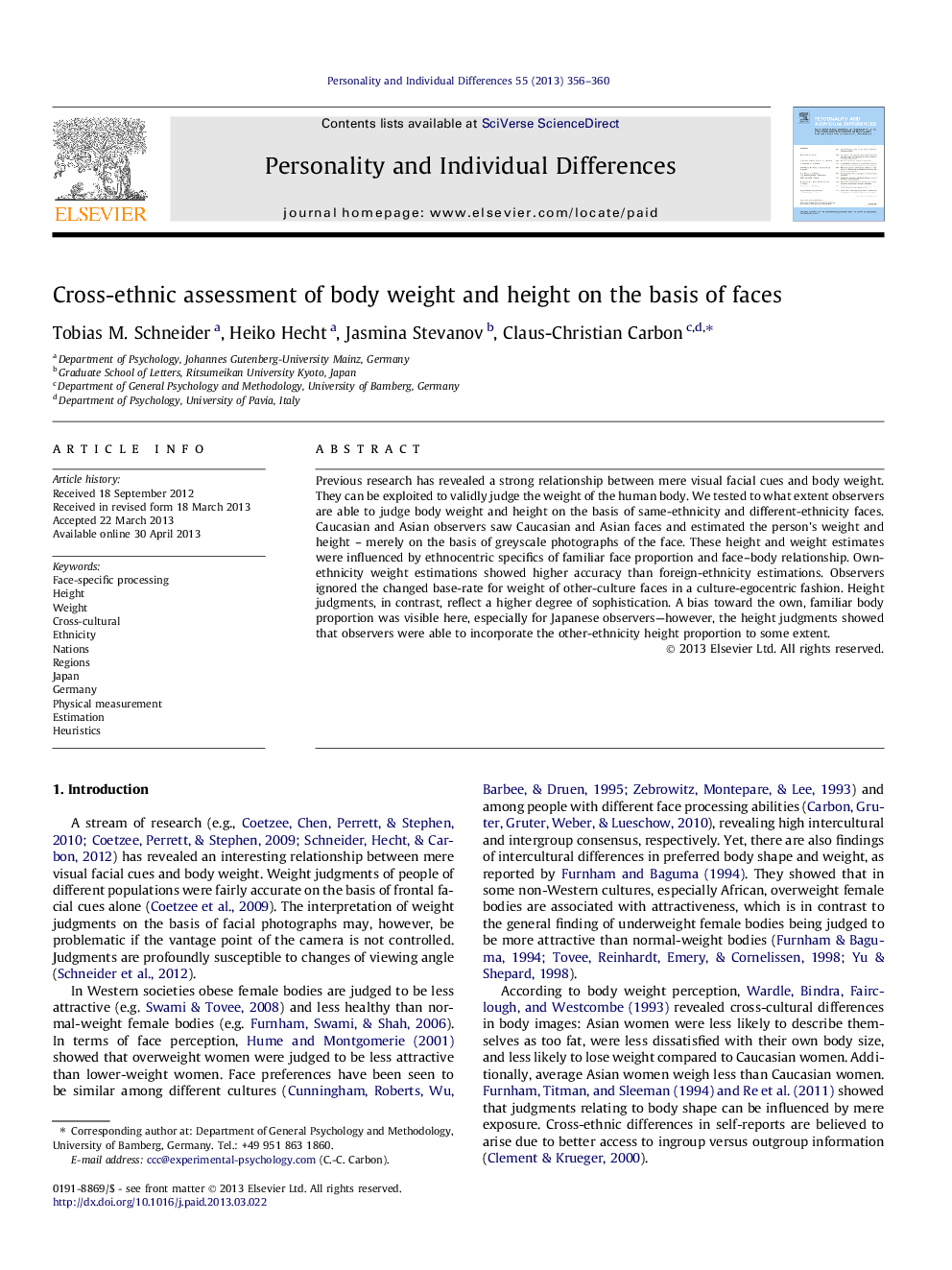| Article ID | Journal | Published Year | Pages | File Type |
|---|---|---|---|---|
| 891153 | Personality and Individual Differences | 2013 | 5 Pages |
•Testing validity of body weight estimations on basis of faces.•Faces were from own- vs foreign ethnicities.•Own-ethnicity weight estimates were more accurate.•Observers ignored the changed base-rate for weight of other-ethnicity faces.•Observers use a ethnicity–egocentric heuristic for assessing weight.
Previous research has revealed a strong relationship between mere visual facial cues and body weight. They can be exploited to validly judge the weight of the human body. We tested to what extent observers are able to judge body weight and height on the basis of same-ethnicity and different-ethnicity faces. Caucasian and Asian observers saw Caucasian and Asian faces and estimated the person’s weight and height – merely on the basis of greyscale photographs of the face. These height and weight estimates were influenced by ethnocentric specifics of familiar face proportion and face–body relationship. Own-ethnicity weight estimations showed higher accuracy than foreign-ethnicity estimations. Observers ignored the changed base-rate for weight of other-culture faces in a culture-egocentric fashion. Height judgments, in contrast, reflect a higher degree of sophistication. A bias toward the own, familiar body proportion was visible here, especially for Japanese observers—however, the height judgments showed that observers were able to incorporate the other-ethnicity height proportion to some extent.
